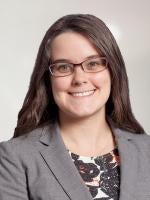 In a significant recent opinion, Judge Richard G. Stearns carefully considered the complex doctrine of issue preclusion, and applied it to a case involving section 101 patentability analyses. The opinion provides helpful clarity on when claim preclusion applies.
In a significant recent opinion, Judge Richard G. Stearns carefully considered the complex doctrine of issue preclusion, and applied it to a case involving section 101 patentability analyses. The opinion provides helpful clarity on when claim preclusion applies.
The case arose out of Exergen’s ongoing litigations over forehead scanning thermometer technology. Exergen filed three separate lawsuits against competitors in Massachusetts – one against Kaz, one against Brooklands Inc., and one against Thermomedics, Inc. and Sanomedics International Holdings. All three cases involved the same two Kaz patents. Both Brooklands and Thermomedics moved for summary judgment that the asserted claims of Exergen’s patents were patent-ineligible, and both motions were granted. Subsequently, Kaz moved for summary judgment that the decisions in the Brooklands and Thermomedics cases should preclude Exergen from asserting its patents against Kaz.
Importantly, however, Exergen had asserted a large number of patent claims against Kaz that were not at issue in the Brooklands or Thermomedics opinions. This required the court to undertake a claim-by-claim analysis in order to determine whether, for the purposes of a section 101 analysis, the previously invalidated claims were patentably indistinct from the claims asserted only against Kaz.
Conducting this analysis, Judge Stearns found that several of the claims asserted only against Kaz were unpatentable, for the same reasons as the claims previously invalidated in the Brooklands and Thermomedics opinions. Generally speaking, these claims were directed towards “natural phenomena” – in other words, they required measurement at a specific point on the body – as well as towards well-known devices from the prior art. Several other claims, however, were sufficiently distinct from the claims litigated in Brooklands and Thermomedics such that claim preclusion could not apply. Although some of the claims presented close questions, Judge Stearns ultimately found that these claims all contained additional “inventive elements,” such as particular techniques for reading temperature or prescribed methods for taking temperature readings. Those additional elements prevented Judge Stearns from finding that there were no materially different invalidity questions as to those claims.
This case is significant for any litigants in cases where the patents-in-suit have been litigated previously. Judge Stearns’ opinion highlights that in a claim preclusion analysis, each claim must be analyzed individually, and must be assessed to determine the degree of similarity between it and the previously litigated claim.
The case is Exergen Corporation v. Kaz USA, Inc., No. 13-cv-10628-RGS, in the District of Massachusetts. A copy of the opinion is here.



 />i
/>i
